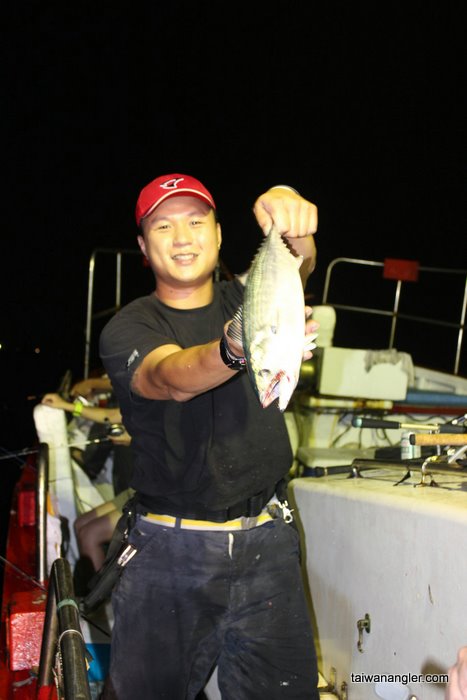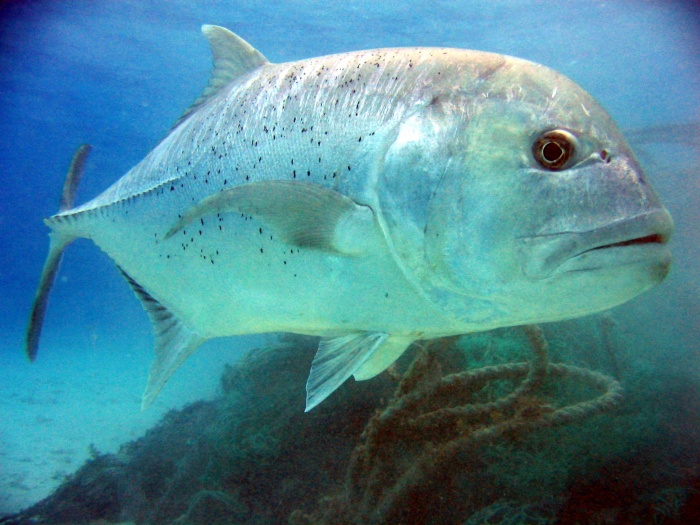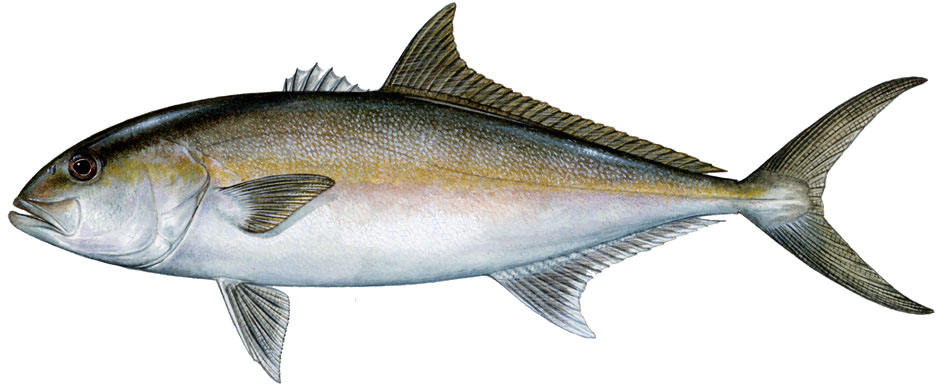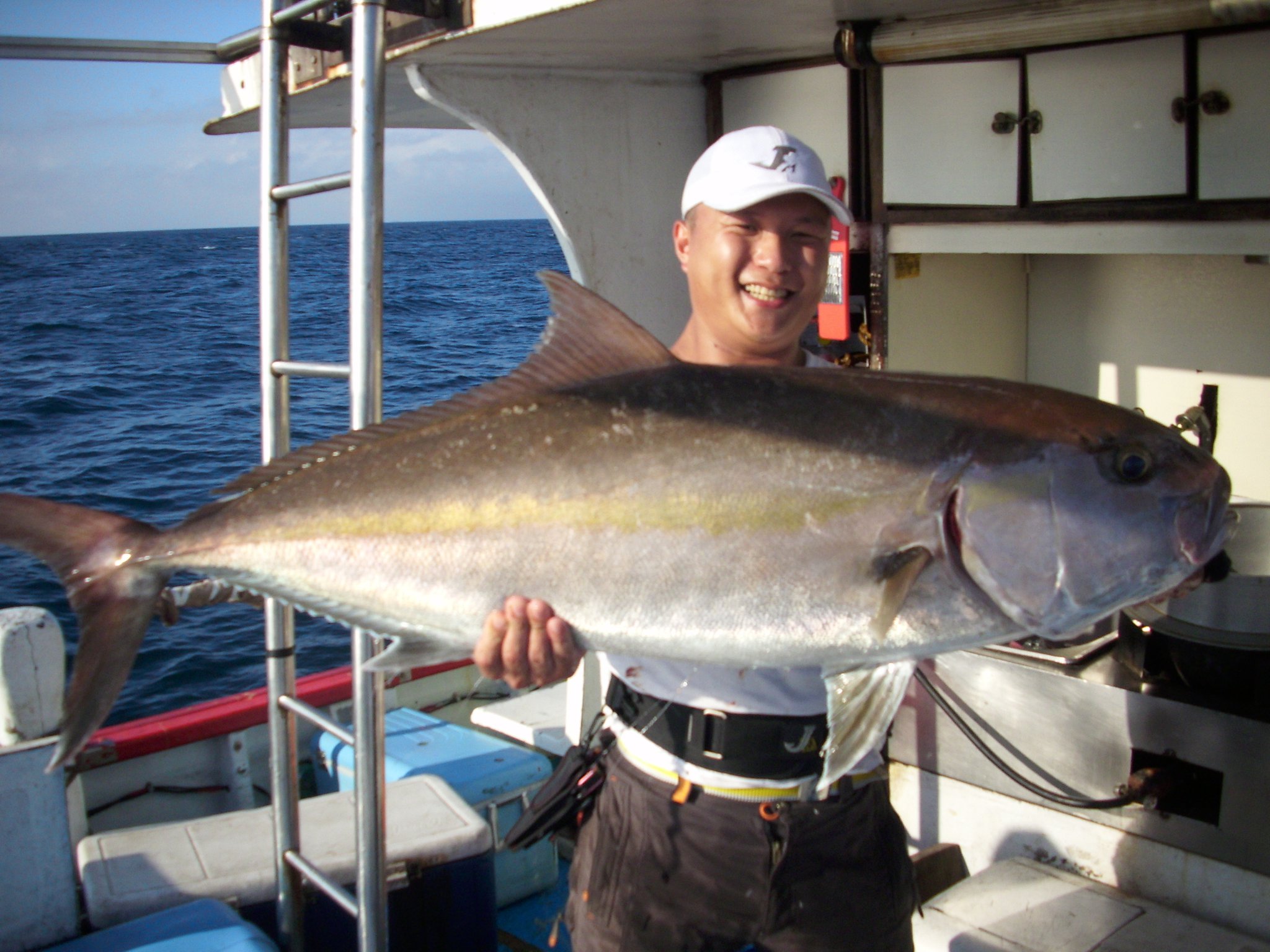Spring Amberjack Jigging Pengjia Islet
 Tuesday, April 15, 2014 at 12:46PM
Tuesday, April 15, 2014 at 12:46PM I’m a little late in getting this up, but I wanted to share a trip report on my March 29 jigging outing up to Pengjia Islet with the Hsinchu crew and Derek Huang from Jignesis. This was my first offshore trip for amberjacks in Asia, so it was quite an education for a southern California lad.
We met up with Derek, who set up the trip, just before midnight at Wanli fishing harbor northwest of Keelung. We were running late and the dozen or so local anglers on this trip were already milling around waiting for our five tardy foreigners to show up.
Aside from putting together two or three charters a week, Derek runs his own tackle company that produces quality jigging rods and high-end jigs. I don’t know if his rods have hit the market yet, but Jignesis brand jigs can be found in local tackle shops like Etuoh/Fun Lure. Since we were going to be fishing at depths in excess of 100 meters in an area with strong tidal currents, we would be dropping jigs in the 230-400 gram range. The heaviest jig in my bag was 280 grams, but luckily Derek had some of his stock on hand for us to fill out our personal arsenals.
With our gear loaded up we were under way by about 1 a.m. for the four-hour ride to Pengjia Islet. After a few minute of pre-rigging solid rings and assist hooks, most of the anglers bedded down on bunks and tatami mats in the cabin for a little nap before we reached the fishing grounds. With the boat heading straight into a gentle 1.5 meter swell and a long day of jigging ahead, sleep came relatively easy in spite of the drone diesel engine.
We pulled up to our first drop at dawn a few kilometers north of Pengjia Islet. The tiny island was just visible off the starboard side of the boat. The sky was grey and would remain overcast with the sun peaking through the clouds a couple of times throughout the day. Rain could be seen on the horizon, but somehow we managed to stay out of the weather until the ride back.
Pengjia, also known as Agincourt Islet, is little more than a 114-hectare grass-covered rock with a lighthouse managed by the Taiwan military. The islet is surrounded by submerged seamounts and reefs, which make it prime habitat for greater amberjack, yellowtail kingfish and a variety of other game species.
The order of the day was for Derek and his captain to locate fish on the sonar and set a drift. We would drop to the bottom at about 100-150 meters and jig over the area until we drifted off the target and the boat had to be repositioned for the next drift.
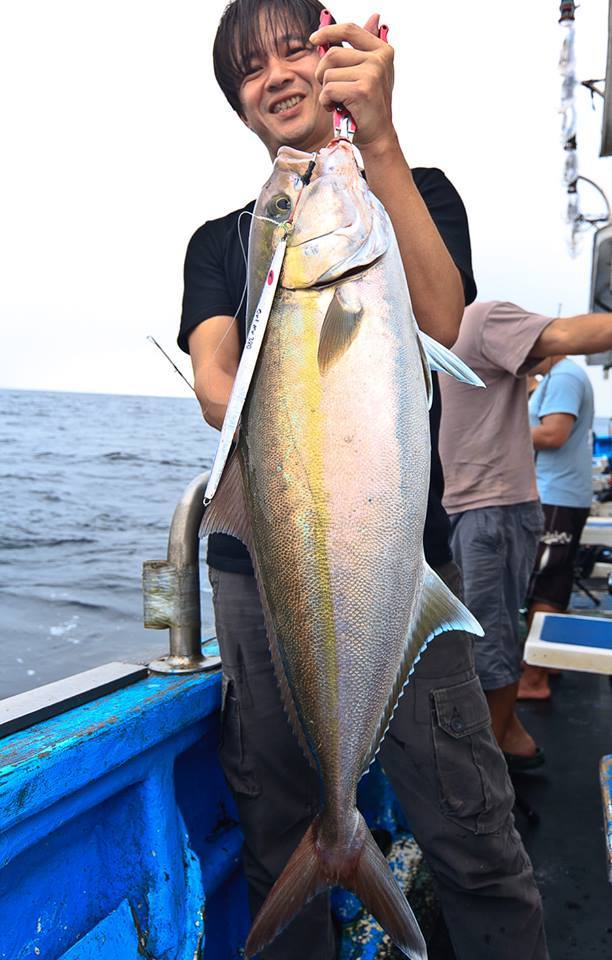 Our excellent trip organizer, Derek Huang. (Photo by Jeff Harris)Anyone who as done this type of jigging knows it can be physically demanding. It doesn’t take long before shoulder, back and arm muscles are screaming. But once rods start bending with hookups, which happened fairly quickly, it’s easy to endure a little discomfort. About half the anglers on the boat—all locals—were using power-assisted reels. While it kind of strikes me as cheating, I will say that I was a bit jealous after an hour or so of yo-yoing a 380 gram jig off the bottom.
Our excellent trip organizer, Derek Huang. (Photo by Jeff Harris)Anyone who as done this type of jigging knows it can be physically demanding. It doesn’t take long before shoulder, back and arm muscles are screaming. But once rods start bending with hookups, which happened fairly quickly, it’s easy to endure a little discomfort. About half the anglers on the boat—all locals—were using power-assisted reels. While it kind of strikes me as cheating, I will say that I was a bit jealous after an hour or so of yo-yoing a 380 gram jig off the bottom.
After a smattering of fish in the 5 kg range were caught during the first few drifts, one of the local anglers at the stern lit into something big and was soon hauling aboard an amberjack that looked to be pushing 30 kg. It was the only trophy-sized fish of the day, but the small to medium ambers stayed steady for most of the morning.
I started my day with a false alarm when I hooked the bottom and the boat’s drift had my reels drag screaming as if I had hooked into my own monster jack. Luckily I only lost my leader. After a quick re-rigging with a little help from the deckhand—the guy was a magician with his bobbin and a chain knots—I was back in the water and soon hooking my first amberjack. It would be my last jack of the day, but the thrill would keep me going for the hours ahead.
A few times throughout the morning we ran into swarms of pufferfish, which are not only a nuisance when hooked, but will also have a go at your line and can snip through PE 5 braid without blinking their beady little eyes. More than a few NT$500-jigs went to the bottom never to be seen again thanks to these buggers.
About midday when the amberjack action was cooling off, we ran into a few schools of bonito about midway up the water column. One minute not much would be happening and the next everyone is hooking up on 2-3kg bonitos—not a bad diversion. We also spotted a few dorado (mahi-mahi) just below the surface, Derek and his Jignesis co-worker were quick to toss a couple of small jigs their way and boat a fine pair of these feisty and beautiful fish.
About 2 p.m. we took a one hour ride to a final spot on the south side of Pengjia. The bite picked up again with a nice mix of small amberjack and bonito filling up the ice chests. At about 4 p.m., we packed it in and started the run back to Wanli. At the harbor a few guys sold off their catches to a local seafood dealer who met us at the dock. Derek treated a few of us to a fantastic dinner at a local seafood restaurant that included some of the amberjack, bonito and mahi-mahi from the day’s haul—a perfect ending to a great day of angling.
 Chris Jackson |
Chris Jackson |  2 Comments |
2 Comments |  8 References | | tagged
8 References | | tagged  Agincourt,
Agincourt,  Jignesis,
Jignesis,  Pengjia,
Pengjia,  amberjack,
amberjack,  bbonito,
bbonito,  dorado,
dorado,  f,
f,  greater amberjack,
greater amberjack,  jigging,
jigging,  offshore fishing,
offshore fishing,  sstriped bonito in
sstriped bonito in  Fishing Report
Fishing Report 








